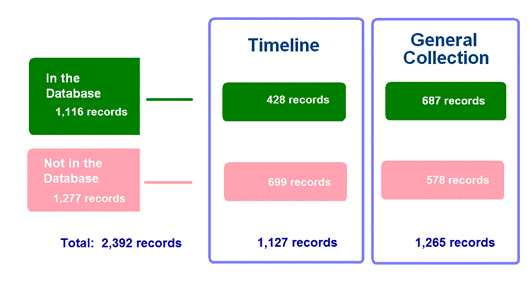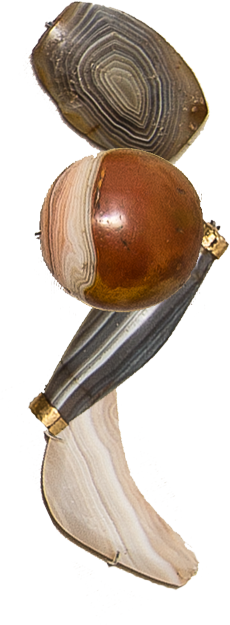Becky DeAngelo, Museum Assistant, Yale Peabody Museum
I have had the pleasure of working with the bead collection since it arrived at the Peabody Museum in 2009. I continue to guide the integration of all of the donated beads into the Peabody’s storage and cataloging systems. This project has been challenging, interesting, and full of beauty.
Ongoing Integration
We began by migrating the data for the 1,116 beads that were already in the Bead Society’s Past Perfect database into the Peabody database, KE EMu. Unfortunately that accounted for just over 45% of the donation. Next, we prioritized the systematic inventory of the Timeline, starting with Panel A. Those beads that were not in the Past Perfect database were given Peabody catalog numbers, as well as descriptions which were based on the Timeline Exhibit Lectern Guide. The donor was determined using the Bead Society Intake Book, and other attributes such as size, material and original bead intake number were recorded. Additionally, it is our goal to label each object with a Peabody catalog number, which is a meticulous and time consuming task given the small size and large quantity of the objects in this donation. Though many volunteer hours have been spent affixing acid-free tags with catalog numbers to each of the beads, this effort is ongoing. Also ongoing is our effort to capture high quality digital images of all objects.
A systematic inventory of the objects that were not in the Past Perfect database which are in the General Collection has been started, but much more work remains. Approximately 25% of the collection falls into this category. With no Lectern Guide to base descriptions on, the process is more time consuming. Many beads remain to be described, measured, photographed, and labeled with their new catalog numbers.

Future Goals
In an effort to make the collection more searchable and usable to the research community, additional information regarding other attributes must also be included. Currently some objects that are described as beads functioned as spindle whorls, netsuke or cylinder seals. Therefore, after we complete the cataloging of all the objects as described above we must return to each object and add as many attributes as possible to the database such as location of origin, time period, and function. This is a long-term objective and will require much more research into individual objects.



